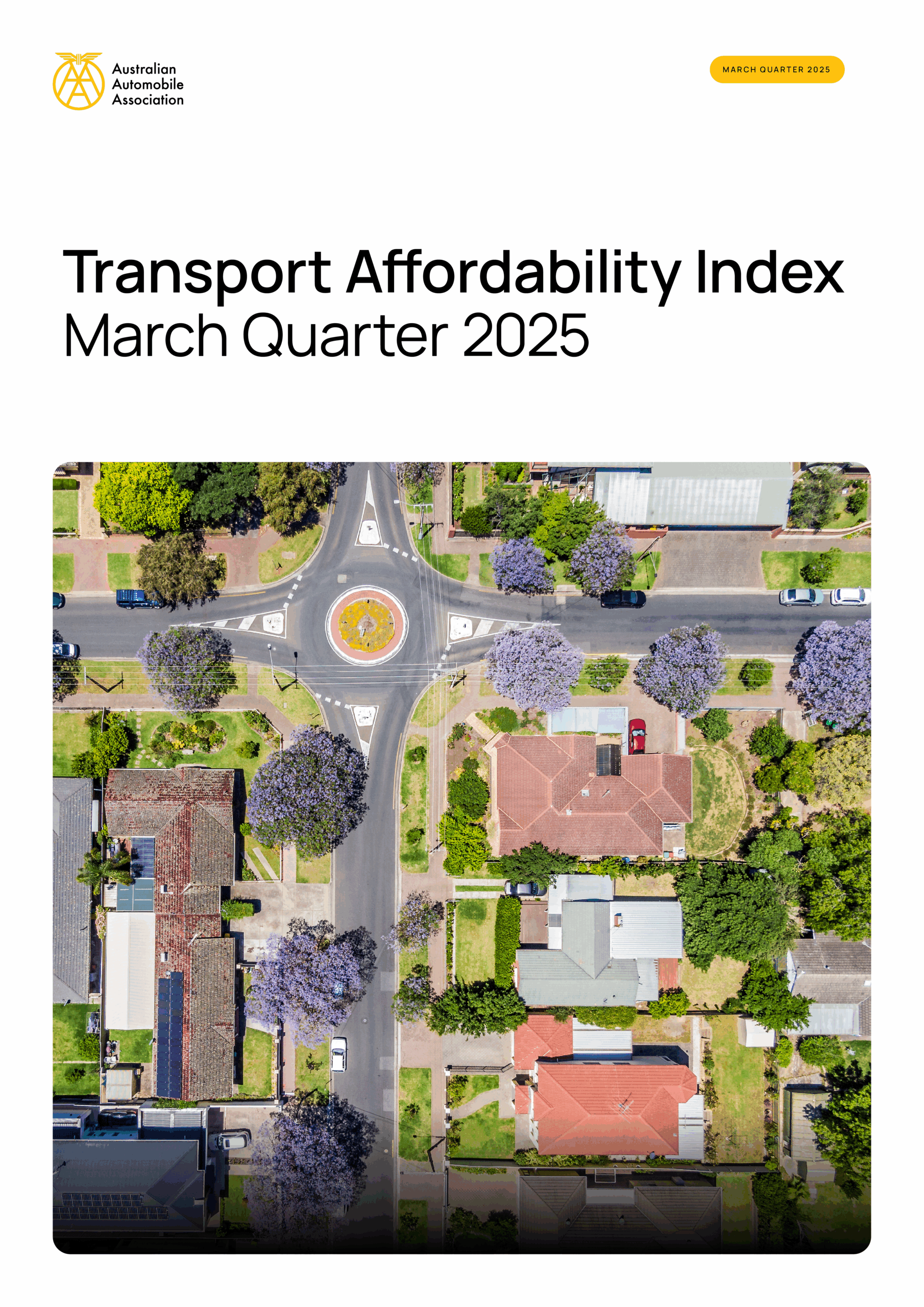Transport Affordability Index
March Quarter 2025
Transport costs ease in March quarter but still consume 15.8% of household income
The affordability of transport costs for Australian households has improved for three consecutive quarters for the first time since 2020, according to new research from the nation’s peak motoring body.
The AAA’s Transport Affordability Index shows that in the March quarter typical transport expenditure increased slightly, but in most cities rising incomes more than offset the modest costs rises.
This meant the proportion of income that typical households spent on transport fell nationally and in all Transport Affordability Index benchmark locations, except Canberra and Bunbury.
In the March quarter, the typical Australian household spent 15.8 per cent of its income on transport, down from 16.1 per cent in each of the previous two quarters and from 17 per cent in the June 2024 quarter.
However, the turnaround in mid-2024 came after seven consecutive quarters of rising total household transport costs drove household transport expenditure as a portion of all spending to significantly levels than before the COVID pandemic.
In Q4 2019, the typical Australian household spent 13.9 per cent of its income on transport. But in Q3 2022, this proportion rose to 14.9 per cent and it peaked at 17 per cent in the June quarter of 2024.
This national figure obscures big regional variations. In the March quarter, the typical Hobart and Launceston households spent 18.2 per cent and 19.9 per cent, respectively, of their incomes on transport. In contrast, the typical Brisbane and Wagga Wagga households’ respective transport expenditures were 14.6 per cent and 12.0 per cent.
The typical Brisbane household’s transport costs are higher than that of Hobart’s. But in the March quarter, the disparity in these cities’ typical incomes meant Brisbane was the most affordable capital and Hobart the least affordable.
The capital city average was 15.9 per cent of household income spent on transport and the benchmark regional centres average was 15.6 per cent. The national average was 15.8 per cent.
The bulk of cost increases came from higher fuel prices – with average annualised rises of $129 for the capital cities and $194 for the Index’s seven regional benchmark centres. But the March quarter’s increased fuel expenditure followed two consecutive quarters of price falls. New vehicle prices also rose, offsetting a fall in car loan interest rates. But rising incomes offset higher costs in all Index benchmark centres except Canberra and Bunbury.
The Transport Affordability Index charts changes in transport-related costs such as fuel, insurance, car maintenance and public transport costs. It also measures transport affordability – or the costs-to-income ratios in Australian capital cities and a benchmark regional centre in each state and the Northern Territory. Transport affordability varies significantly across the country, as there are disparities between different capitals’ and regional centres’ typical costs and median incomes.
